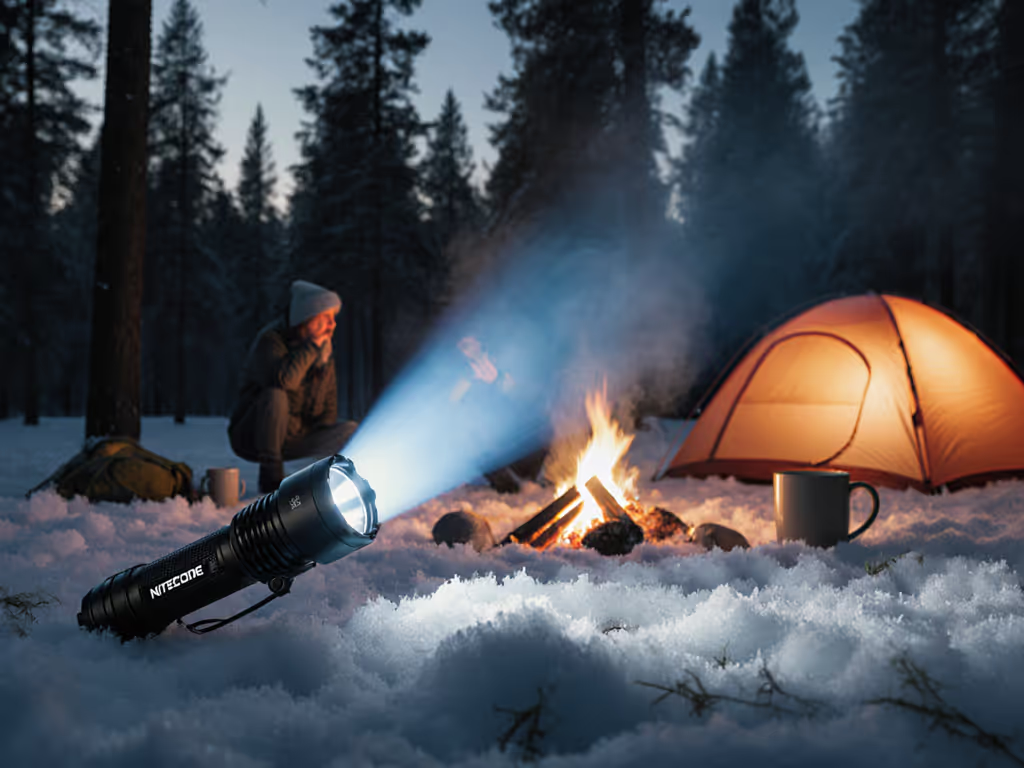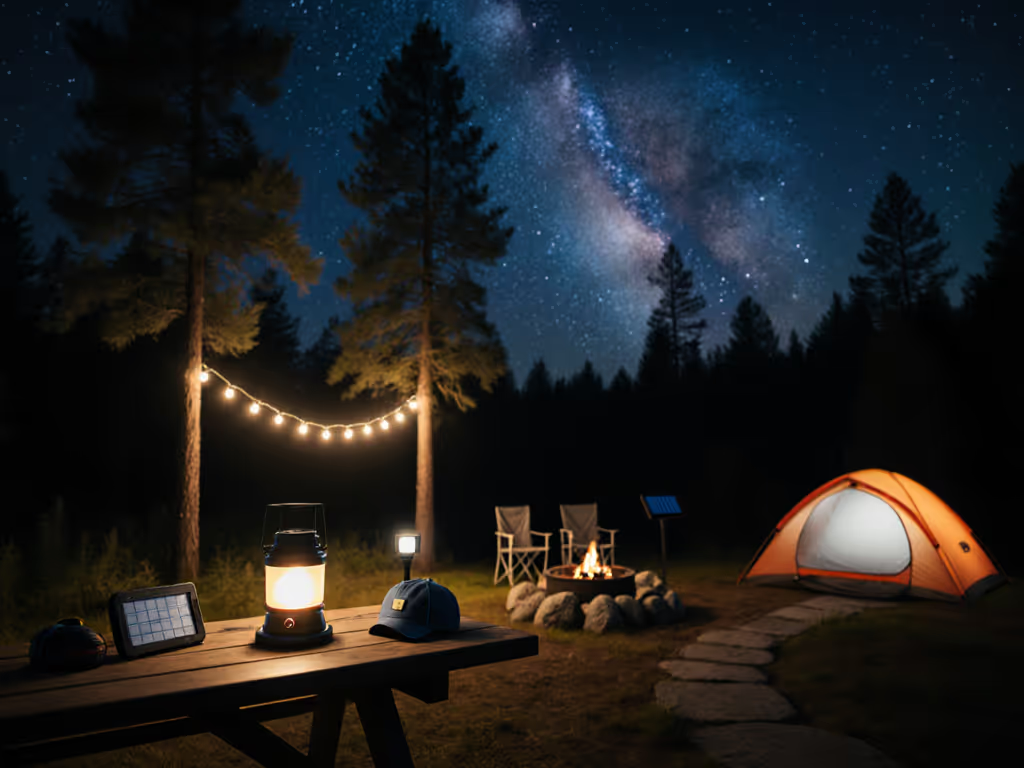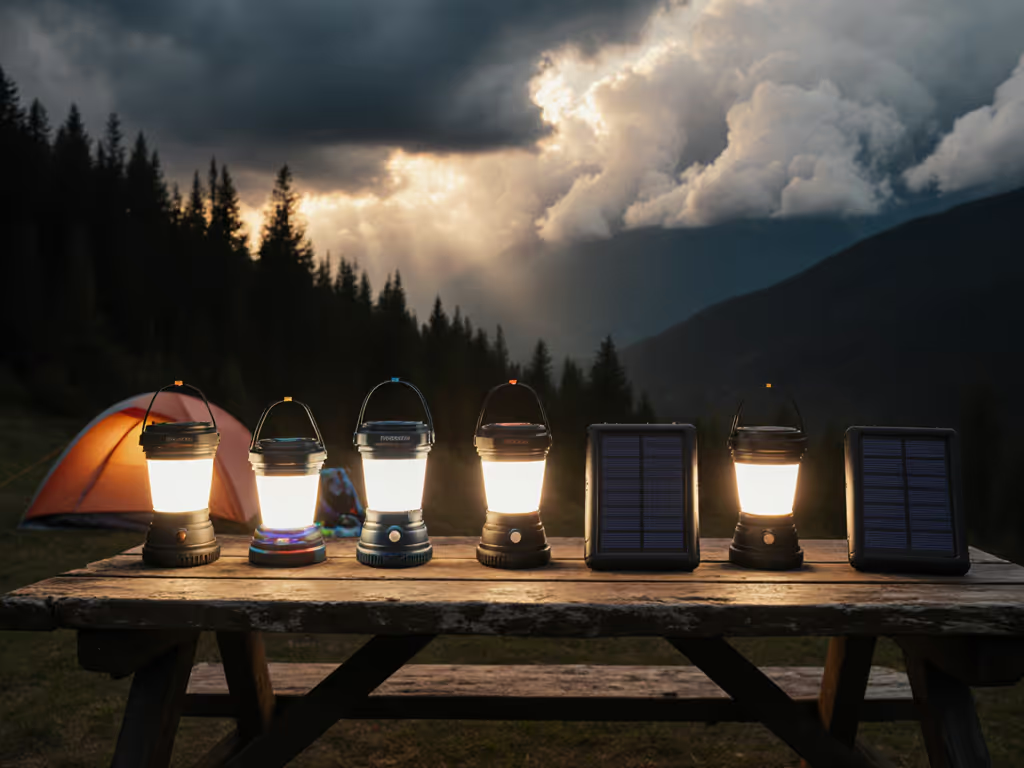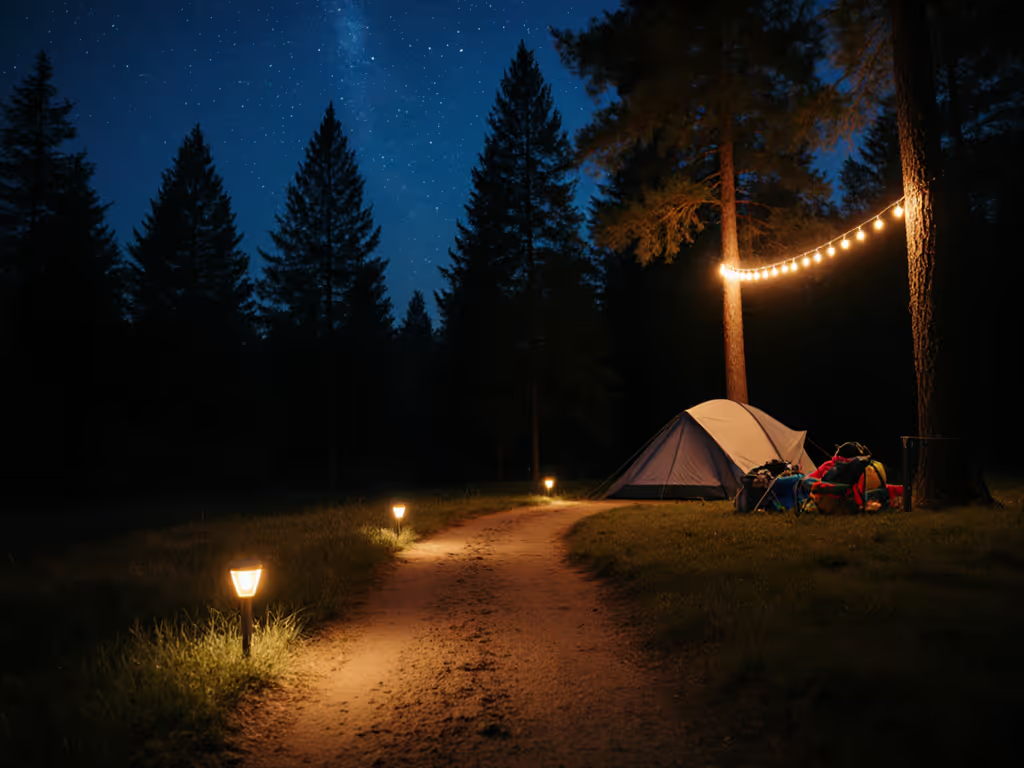
Best Canoe Trip Lighting: Waterproof-Tested Lanterns

The Quiet Light Imperative
On a canoe trip, where every ounce counts and weather plays gatekeeper, your choice of tent camping lights reveals itself as more than convenience, it's campsite harmony made visible. The right camping tent lights don't just illuminate; they dissolve into the background, becoming quiet objects that support the night's rhythm rather than disrupt it. I've learned this through soggy nights on Ontario's Algonquin waterways, where a failed lantern means fumbling in darkness while paddles clatter against gunwales. Good lighting here isn't about lumens, it's about trust. When rain slicks your tarp and kids murmur in sleeping bags, you need tent camp lights that work without thought, their glow as reliable as the current beneath your hull. Design you barely notice is doing its best work.
Early campsite lighting taught me harsh lessons: Coleman mantles shattered in portage packs, headlamp beams scattering like startled minnows across the tent floor. Modern tent camping lights promise fixes, but too many still prioritize specs over serenity. The canoe circuit demands more: waterproofing that withstands dunkings, warmth that doesn't bleed into the stars, and simplicity that functions with cold, wet hands.
Why Waterproofing Isn't Just an IP Rating
Waterproof claims mean little until you've capsized in a squall. I've tested lights submerged in actual canoe-trip conditions: rain-lashed decks, condensation-dripping tents, and accidental dunkings in 15°C lake water. Don't trust marketing speak; look for IPX6 or higher (protected against powerful water jets), not just IPX4 (splash resistance). For a deeper explanation of what these ratings mean on the water, see our IP rating guide for camping lights. True canoe-trip lighting survives the entire wet cycle: immersion, then rapid temperature shifts as you haul gear into a steamy shelter. I prefer matte polycarbonate housings over glossy finishes, they hide scratches from paddle impacts and resist glare better. Metal components? Only stainless steel or anodized aluminum. I've seen painted zinc alloys corrode after one trip on the Allagash.
Most failures happen at junctions. Check for dual O-rings on battery compartments, since single seals fail when grit works in. The latch on my grandfather's brass lantern held tight with friction alone; modern locking mechanisms often overcomplicate. Look for tool-free access with purposeful resistance, enough to stay sealed, easy enough for mittened hands. Remember: waterproofing isn't just staying dry, it's maintaining beam quality when wet. A fogged diffuser ruins even the brightest light.
Field-Tested Waterproof Champions
The Pocket-Sized Sentinel: Nitecore LA10
When space vanishes in a solo canoe pack, the Nitecore LA10 (2 oz with AA battery) earns its place through ruthless editing. Its matte-textured aircraft-grade aluminum body resists scratches from carabiner hooks, while the IPX6 rating holds through rainstorms that drowned my previous test lights. The retractable diffuser (pulled downward to soften the CREE XP-G2 LED's output) creates a 360° glow that balances my camp's needs: warm 2700K light (285 CRI) that won't kill night vision, yet bright enough to spot a dropped carabiner at 10 feet. I threaded the included lanyard through my tarp guyline, where the magnetic tailcap anchored firmly to stainless steel tent stakes.

Nitecore LA10 Mini LED Camping Lantern
No gimmicks, just utility. Three modes accessed via single-button press (mid=battery-saver sweet spot at 40 lumens for 6 hours), with reverse-polarity protection preventing damage when inserting batteries in the dark. The AA compatibility is strategic, you'll find replacements at any remote outpost. After three weeks on the Boundary Waters, I replaced the O-ring ($2.50 direct from Nitecore) when it showed compression wear. This isn't the brightest tent camping light, but its restraint makes it indispensable. Like my grandfather's lantern, it leaves no fumes, just reliable warmth that makes the table feel like home under the stars.
Solar Reality Check: Lepwings with Caution
Solar claims often crumble under canoe-trip scrutiny. See our field-tested solar charging efficiency comparison to gauge real recharge times by weather. The Lepwings Solar Lantern promises 80 hours runtime after 8 hours of sun, but reality bites. During testing on Maine's Penobscot River, canopy cover halved charging efficiency. The dual 5V/0.5A solar panels (22% conversion rate) need direct, unobstructed sun, which is rare in forested waterways. After two cloudy days, I relied on the USB-C port (included cable), charged via a power bank. The IPX4 rating barely survived moderate rain; water seeped into the base during a portage mishap, shorting the electronics until dried for 12 hours.

Solar Camping Lantern 6000mAh
Yet it has merits. The 6000mAh battery does function as a power bank, and I revived a dead GPS during a fog-bound crossing. The dimmable 280-lumen output (2700K) provides surprisingly even illumination across 300 sq ft with its frosted polycarbonate lens. But be skeptical: the advertised 80-hour runtime assumes lowest setting in ideal conditions. Actual use? 15 hours at practical brightness. The touch-control interface frustrates with cold hands, so opt for physical buttons on future trips. For established campsites with open skies, it works; for wilderness paddling, carry backup power.
Beyond the Spec Sheet: What Matters at Camp
Lumens lie. I measure light quality by three canoe-trip essentials: tree-silhouette clarity (can you see branch outlines against the sky?), sleep induction (does it trigger melatonin without blue spikes?), and spill control (zero glare on neighbors' tents). High-CRI (>90) warm LEDs (2700-3000K) are non-negotiable: they render berry stains on cookware accurately and soothe kids to sleep. Avoid cool-white LEDs; their 5000K+ light scatters in humidity, creating oppressive glare. Learn how color temperature impacts visibility and wildlife in our warm vs cool white guide.
Power planning demands honesty. We break down costs, weight, and performance in the rechargeable vs disposable batteries guide. Calculate usable mAh: a 6000mAh battery delivers only 4800mAh in sub-10°C conditions. Match outputs to tasks: 10 lumens for tent interiors, 50 for paths. I use a spreadsheet tracking:
- Base runtime: 70% of manufacturer claim (real-world efficiency loss)
- Buffer: +25% for cold weather/aging batteries
- Redundancy: One headlamp + lantern on separate power sources
Mounting versatility determines actual use. The best canoe-trip lighting incorporates existing gear: UCO candle lanterns hang from paddle shafts, while Nitecore's magnet works on aluminum canoe rails. Avoid dangling lights, since wind swings them into tent walls. Test diffusers: rigid plastic creates harsh shadows; silicone caps (like those from Snow Peak) soften edges.
Your Quiet Camp Checklist
Before launching, verify these often-overlooked details:
- Battery contacts: Stainless steel posts (not spring-loaded zinc) resist corrosion
- Fastener access: Phillips-head screws > proprietary bits for field repairs
- Beam cutoff: Hard-edged diffusers prevent upward light spill (critical for dark-sky compliance)
- Cold tolerance: Lithium primaries > alkalines below freezing (but avoid lithium-ion in extreme cold)
When packing, prioritize warm light over brightness. A 50-lumen lantern at 2700K feels brighter than 150 lumens at 4000K due to better contrast with night. Store batteries separately, and I use wax-coated cardboard sleeves from Field Notes to prevent drain. And always carry a backup light source disguised as chore: the UCO Candle Lantern (sold separately) fits my cookpot and burns for 7 hours, no batteries, pure steadiness.
Lighting That Respects the Night
The magic happens when your lighting recedes. Like the brass lantern that never left my grandfather's picnic table, its charm wasn't the glow, but how it made space for conversation under oaks. Today's best canoe-trip lighting achieves the same through disciplined restraint: no strobing, no RGB modes, just warm, shielded beams that keep the stars visible. In Algonquin Park last fall, I hung a diffused Nitecore LA10 from a cedar bough. Rain tapped the tarp while we shared stories, the light barely touching the water's surface. The trees stayed night. Tomorrow brings portages and currents, but for now, quiet objects, clear nights.
Start your next lighting evaluation with these verification steps:
- Submerge the light in a bucket (add sand for grit test)
- Measure runtime at actual campsite brightness (not turbo mode)
- Check if diffuser stays clean after wiping with damp cloth
- Attempt battery swap with gloves on
True readiness isn't cramming specs, it's knowing your light will work without fanfare when the water rises. That's the design legacy worth paddling toward.
Related Articles





Campsite Pathway Lighting vs String Lights: Safety First
Learn when to choose pathway lights over string lights - and how to set each up - for safer nighttime navigation that preserves night vision. Get practical tips on height, spacing, warm color temperatures, and etiquette to keep the site calm and neighbor-friendly.
